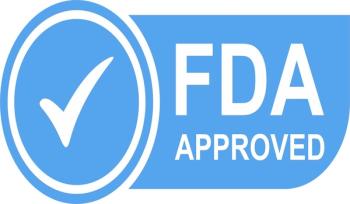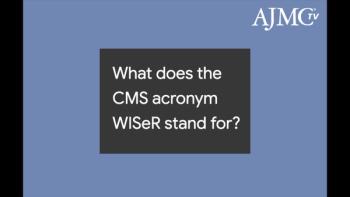
Identifying Patients With Low-Risk Breast Cancer for De-escalated Therapy
A new analysis of the Breast Cancer Index (BCI) may help identify women with HR-positive breast cancer who could potentially benefit from shorter or less-intensive treatment.
Marie-France Jilderda, MD, PhD candidate in surgical oncology at Leiden University Medical Center in the Netherlands, contributed to research on an adjusted
Jilderda suggests that the BCI may help identify a subset of postmenopausal women with HR-positive, node-negative breast cancer at minimal risk of distant recurrence, potentially allowing them to consider de-escalating endocrine therapy and avoid unnecessary adverse effects.
This transcript was lightly edited for clarity.
Transcript
The American Journal of Managed Care® (AJMC®): Explain the significance of this study in the context of current breast cancer treatment guidelines. How does the BCI address a specific unmet need in patient care?
Jilderda: Current American Society of Clinical Oncology [ASCO] and National Comprehensive Cancer Network [NCCN] guidelines recommend at least 5 years of endocrine treatment for patients with HR-positive breast cancer as the standard of care. However, 12% to 15% of these patients will develop a recurrence, with up to 60% of these patients discontinuing endocrine therapy early due to unwanted adverse effects. Therefore, it is crucial to have tests that can help tailor treatment to an individual’s risk profile.
In this new study, we explored the potential of the BCI test to identify a new "minimal-risk" group of postmenopausal, node-negative women who have a risk of distant recurrence less than 5% over years 0 through 10. Identifying patients at a minimal risk of 10-year distant recurrence could potentially help spare these women the unwanted adverse effects of standard treatment with the appropriate guidance of their care team.
AJMC: What new insights does the BCI provide?
Jilderda: With this adjusted BCI model, a patient population at minimal (< 5%) risk of 10-year distant recurrence may be identified.
In both cohorts, this comprised about 20% of the total study population. Although further validation is needed prior to this new prognostic assessment being available, these investigational results are promising. Identification of patients at sufficiently low risk may support de-escalating endocrine therapy with the appropriate guidance of their care team.
AJMC: How can health care providers use the BCI to have more informed conversations with patients about their treatment options?
Jilderda: The BCI test is both predictive in assessing whether extended endocrine therapy beyond 5 years is likely to help reduce a patient’s risk of recurrence and prognostic in determining a patient’s risk of late distant recurrence with or without treatment. The BCI test is the only genomic assay recognized by both the ASCO and NCCN guidelines to predict which patients with HR-positive, early-stage breast cancer are likely to benefit from extended endocrine therapy.
Using the BCI test currently enables health care providers and their patients to make more informed and personalized treatment decisions about extended endocrine therapy.
Newsletter
Stay ahead of policy, cost, and value—subscribe to AJMC for expert insights at the intersection of clinical care and health economics.















































